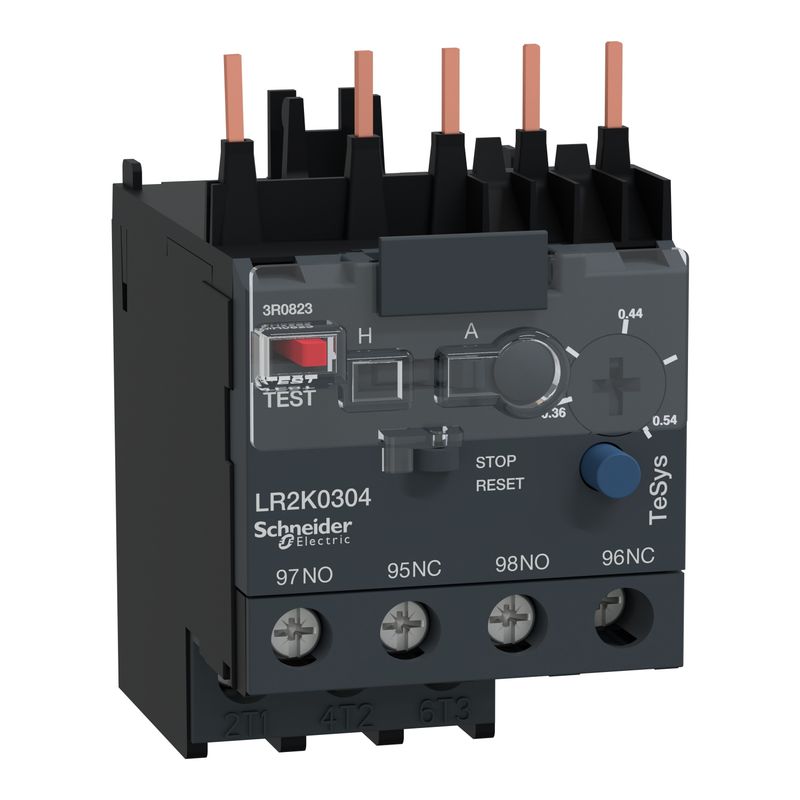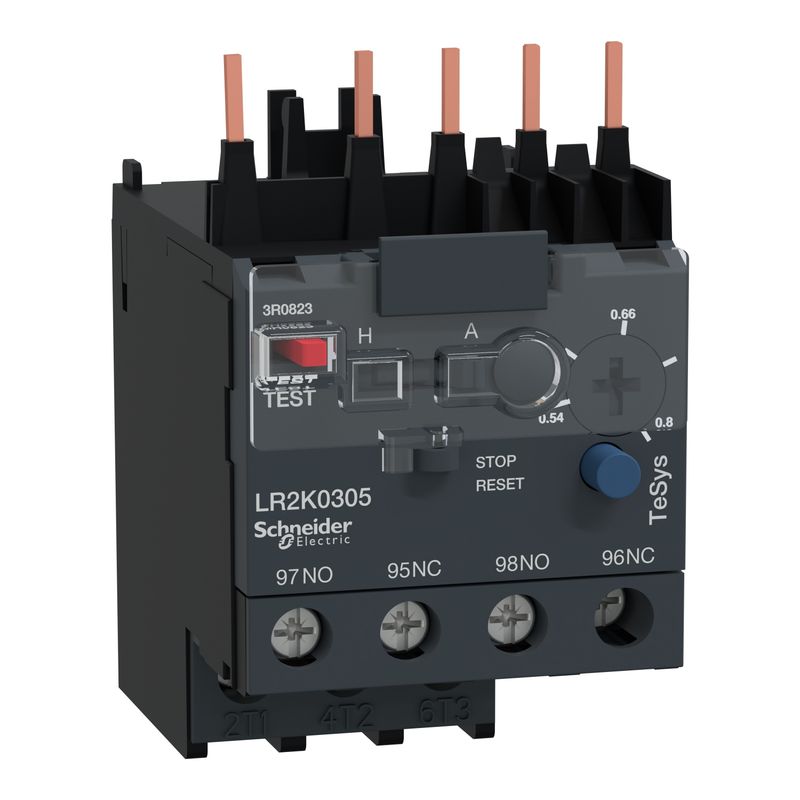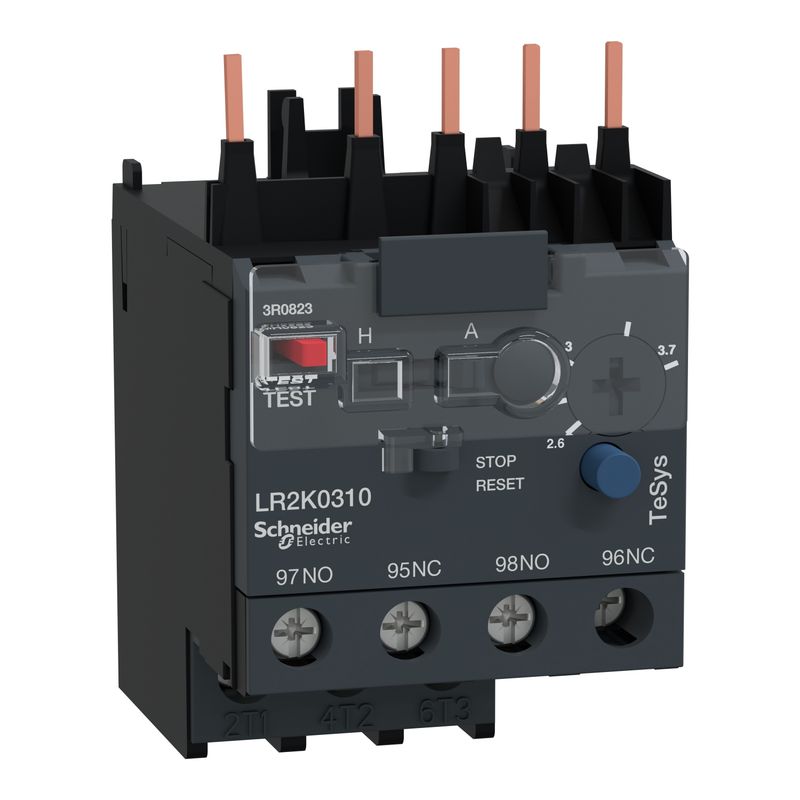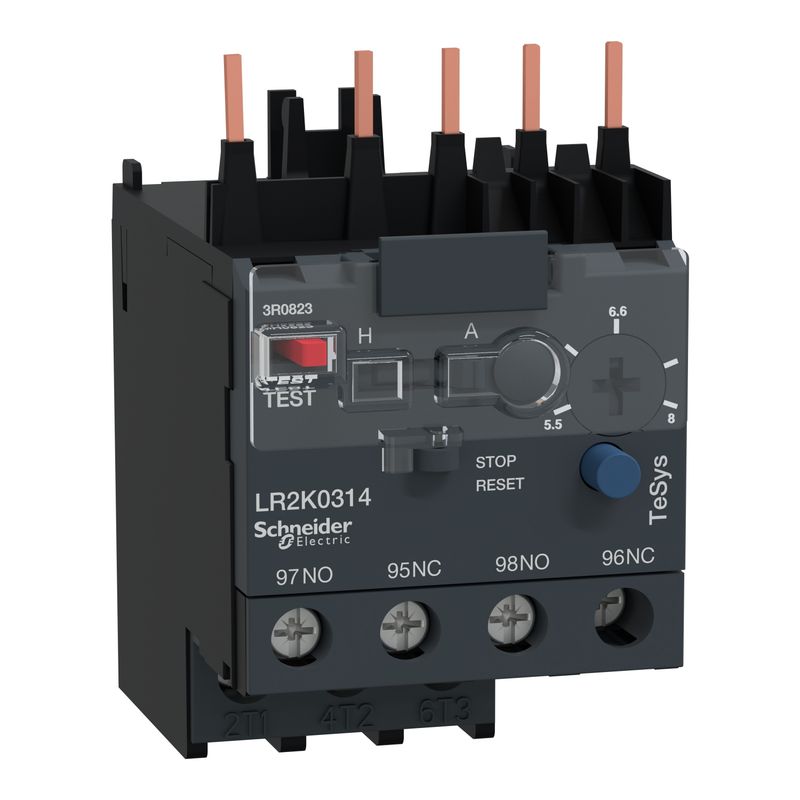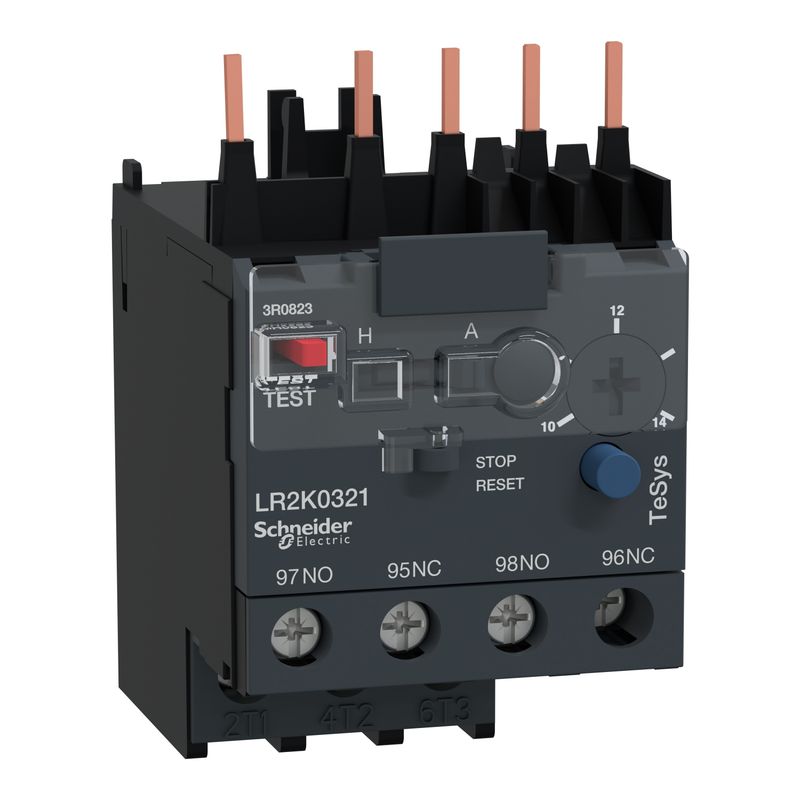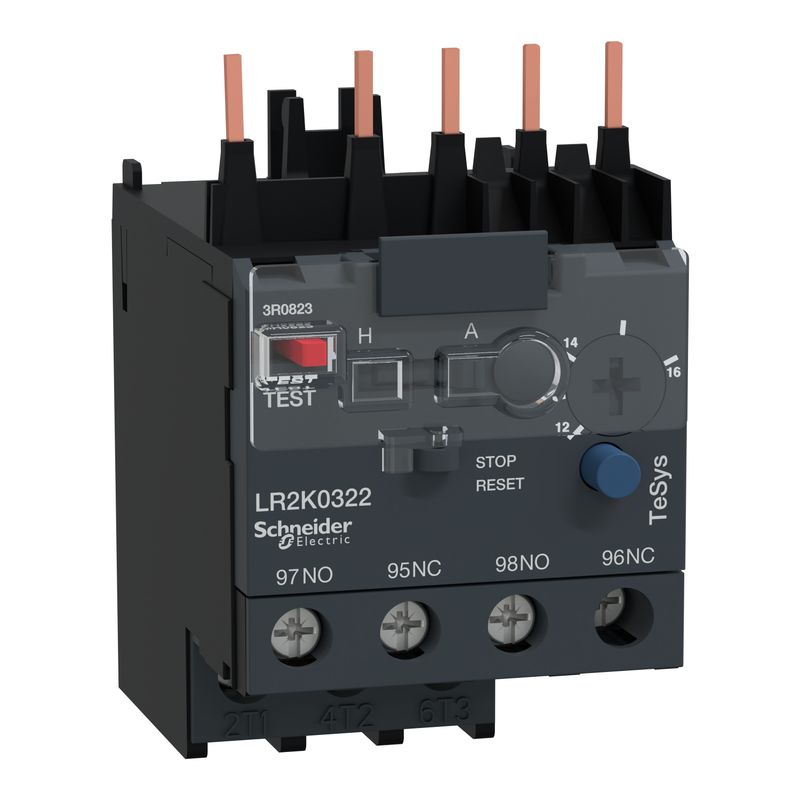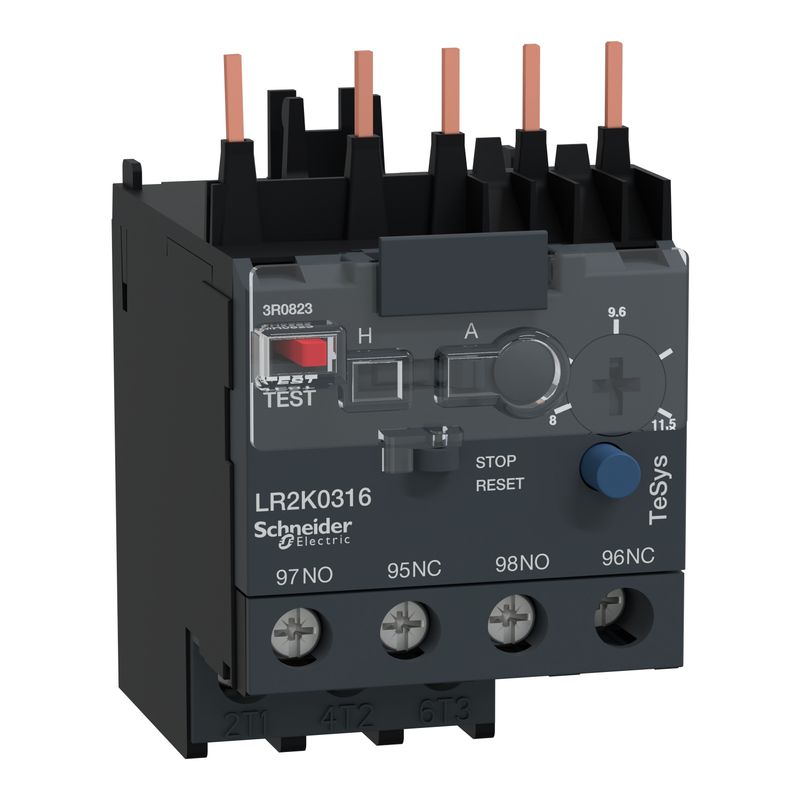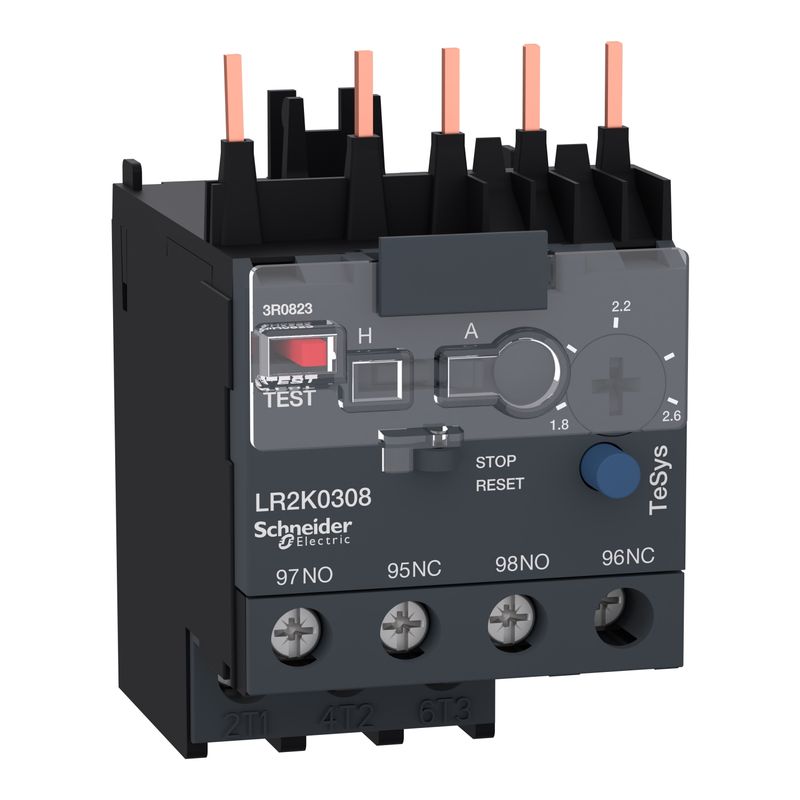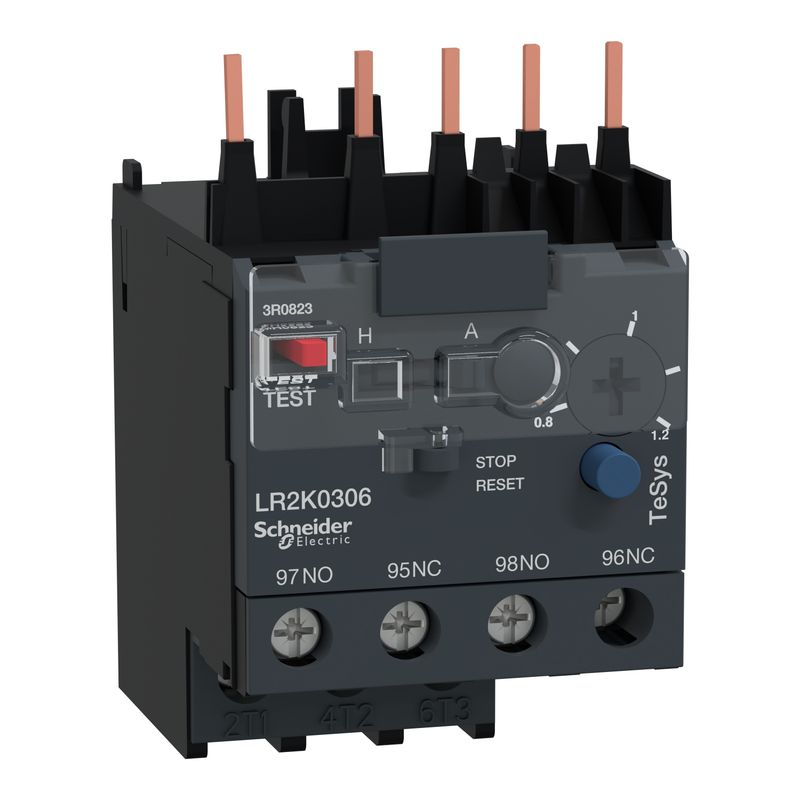Thermal Overload Relay (K)
The TeSys LR2K series by Schneider Electric is a range of thermal overload relays designed for the protection of electrical motors against overloads, phase failures, and long starting times. These relays are typically used in conjunction with TeSys K contactors, providing a compact and reliable solution for motor protection.
Key Features of TeSys LR2K Relays:
- Overload Protection:
- Protects motors against overloads, preventing damage and extending motor life.
- Phase Failure Protection:
- Detects phase loss and provides protection, which is critical for three-phase motors.
- Thermal Trip Class:
- These relays generally have a thermal trip class of 10A or 20, suitable for various motor starting and operating conditions.
- Adjustable Current Setting:
- The relay has a dial for setting the appropriate current range to match the motor's full-load current.
- Manual and Automatic Reset:
- Provides flexibility for resetting the relay after a trip, either manually or automatically.
- Compact Design:
- The small footprint of the LR2K relays makes them suitable for use in compact control panels and systems.
- Direct Mounting:
- Can be directly mounted onto TeSys K contactors, simplifying assembly and reducing wiring.
Specifications:
- Current Range: Different models cover a wide range of current settings, typically from 0.1A up to 16A or more.
- Trip Class: 10A or 20
- Mounting: Direct mounting on TeSys K contactors
- Reset Type: Manual or automatic reset options
- Standards: Compliance with international standards such as IEC 60947-4-1
Application:
TeSys LR2K thermal overload relays are widely used in various applications including:
- Industrial motor control
- HVAC systems
- Pumps and compressors
- Conveyor systems
- Machine tools
Selection Guide:
When selecting a TeSys LR2K relay, consider the following:
- Motor Full-Load Current (FLC):
- Choose a relay with an adjustable current range that includes the motor’s FLC.
- Trip Class:
- Select the appropriate trip class based on the motor’s starting characteristics and application requirements.
- Reset Mechanism:
- Decide between manual or automatic reset based on the application’s operational needs.
- Coordination with Contactor:
- Ensure compatibility with the TeSys K contactor model being used.
Installation and Wiring:
- Ensure proper installation according to the manufacturer's guidelines.
- Directly mount the relay onto the TeSys K contactor or use appropriate mounting accessories.
- Connect the wiring according to the wiring diagram provided with the relay, ensuring correct connection of power and control circuits.
Maintenance:
Regular maintenance includes checking for proper operation, ensuring that the current setting matches the motor’s requirements, and inspecting for any signs of wear or damage.





